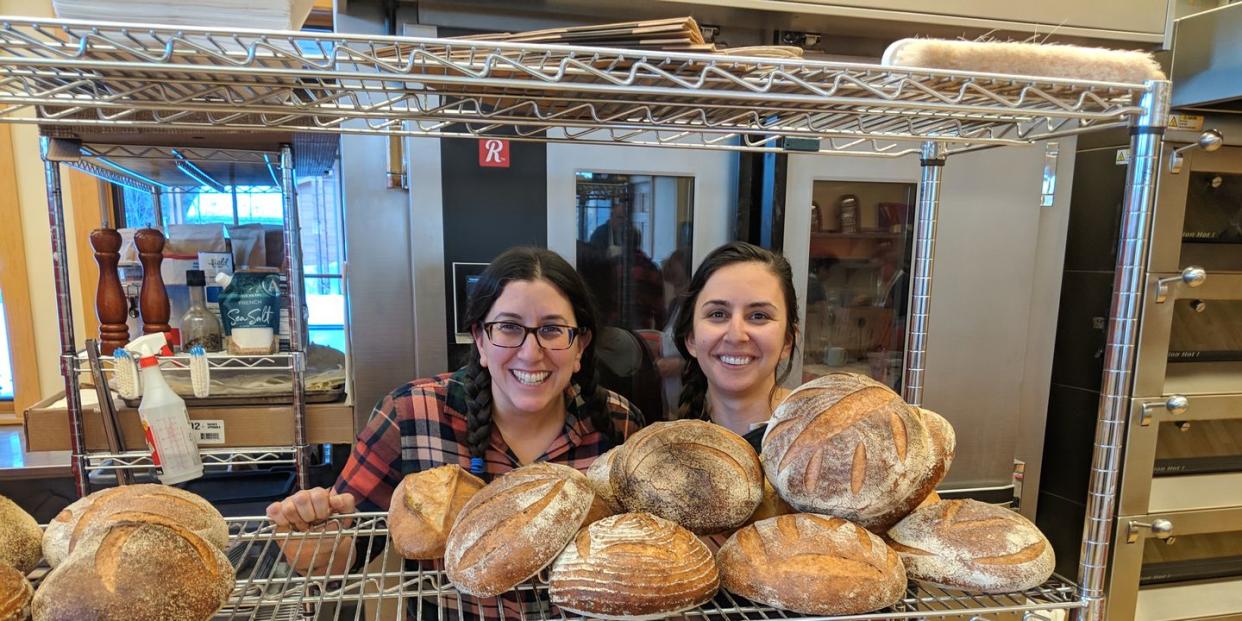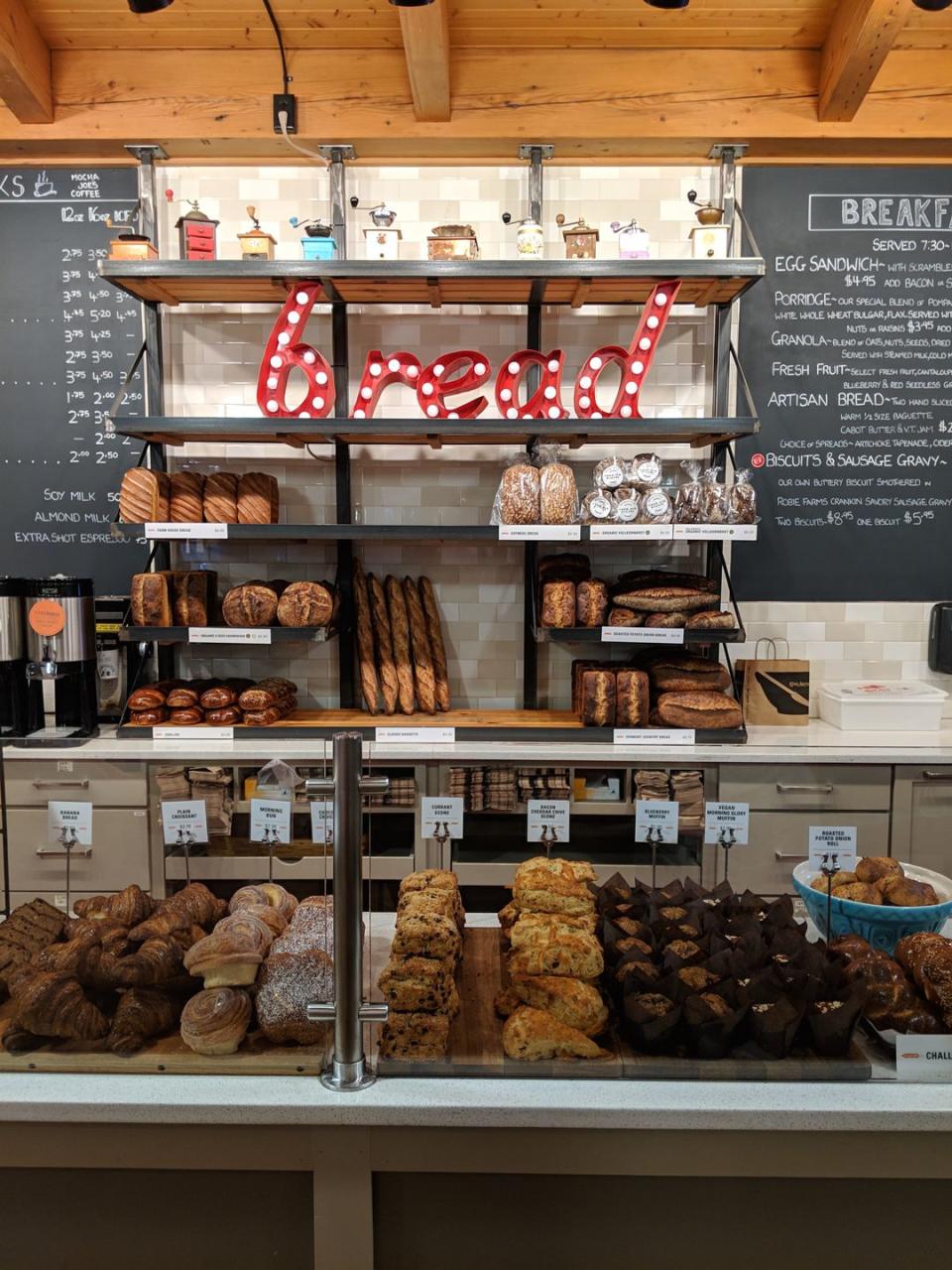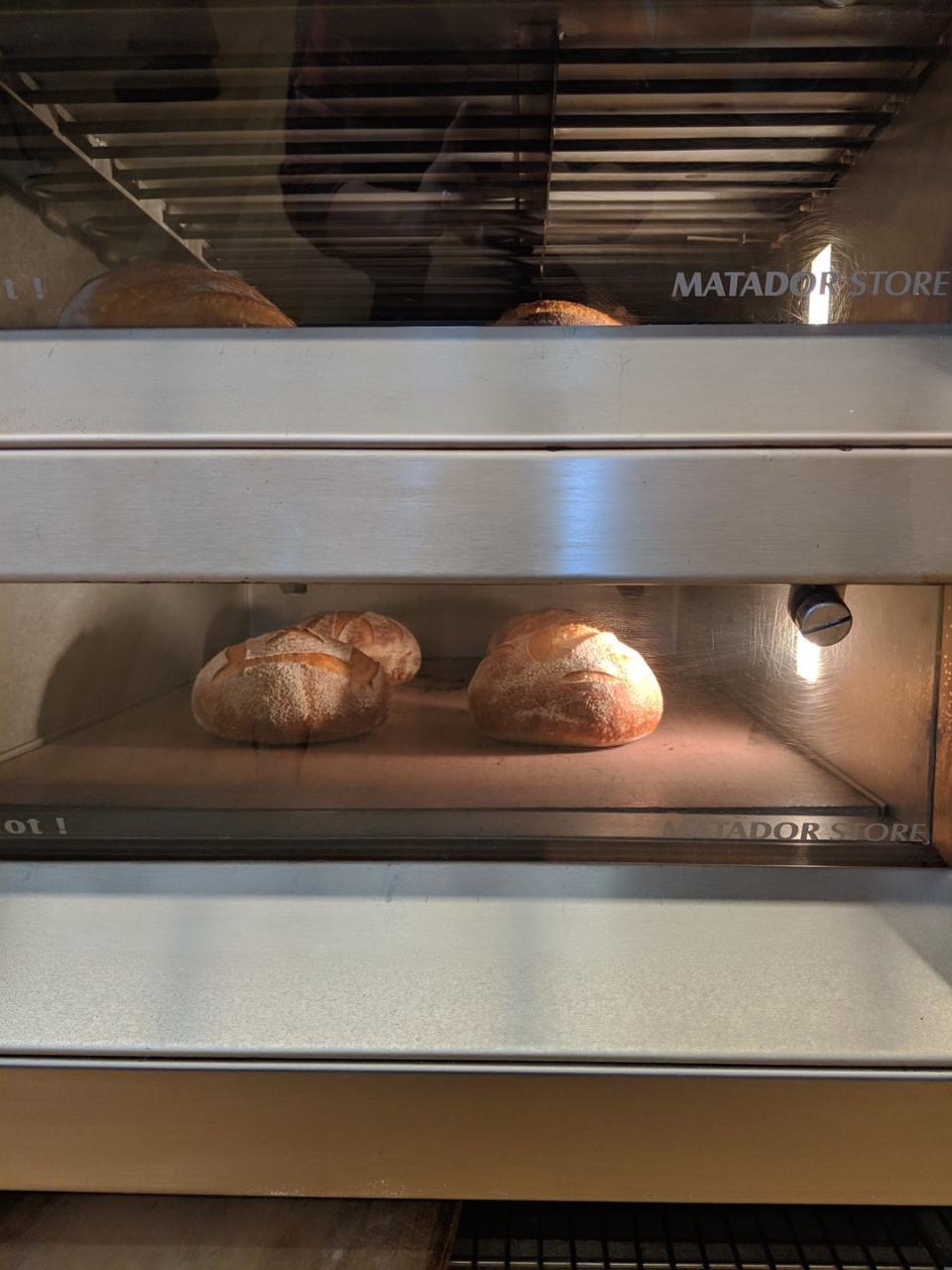I Took a 3-Day Bread Baking Class, and Walked Away With More Than a Full Stomach

It’s 3 p.m. on a weekday, and I’m up to my elbows in dough during a class with King Arthur Flour, the 229-year-old, employee-owned company that sells flour in grocery stores and to professional bakeries across the United States. One one side of me, I have sourdough starter bubbling. On the other side, a rack of freshly baked loaves fill the room with starchy perfume. To cap it all off, I’m surrounded by awesome, positive people while learning a new skill that I can take home and use to feed my family. This is my happy place.
A post shared by Annemarie Conte (@annemarieconte) on Feb 20, 2019 at 7:00pm PST
Bread baking is a very specific skill that’s hard to master from a book or even a YouTube video. There are so many factors that affect the end result (air temperature, water temperature, oven temperature. . . so many temperatures), and since the process is long - taking hours and hours to get a final result - it’s something that is best learned apprentice-style.
I hang out in the Woman’s Day Test Kitchen a lot (I mean, wouldn’t you?), and I’ve had a ringside seat as Taylor Murray, one of the people responsible for developing the Woman’s Day recipes we know and love, tries to teach herself sourdough bread baking. She’s showed me loaves that were delicious, but weren't perfect by her standards - too firm, too dense, or too-soft crust - and she is having trouble figuring out how to fix it. So when KAF invites Taylor up to Vermont to take a three-day sourdough intensive class at their baking school, I get myself invited along.

The Start(er)
On the first day, we wake up early to get to the King Arthur Flour Café by 7 a.m., where the bakers are nearing their lunch breaks. We watch the team work with quiet, steady efficiency, shaping loaves and sliding racks of baguettes into a huge deck oven while head baker, Martin Phillip, gives us a tour of the kitchen. To be honest, there’s not much to see. It’s very simple - and that’s the point. Flour, yeast, salt, water, and skill come together to make something truly magic and life-sustaining under Martin’s strong, watchful eye.
Afterwards, we settle in for some breakfast in the adjacent cafe - a huge mug of coffee and a few selections from the display cases. It’s hard to narrow down our choices, so we don’t. We chomp on a slice of banana bread, a morning bun, a cardamom bun, and a scone while Martin tells us about starting out at KAF as a truck driver and working his way up to head baker. "Bread baking is like hitting a moving target," he tells us. "Even seasoned bakers call it a practice because you have to be constantly making adjustments." As he talks, we thumb through the pages of his book Breaking Bread: A Baker’s Journey Home in 75 Recipes. In it, Martin has written lyrical essays about his life in while also showcasing one of the only comprehensible explanation of baker’s math we’ve ever seen. The balance between science and art in his book is a perfect metaphor for bread baking itself. Martin’s story and you-can-do-this attitude tees us up nicely for the main event.

The Mix
We walk down the hall to our classroom and meet the other students, who have traveled from all over to be here and who come from many different backgrounds - home bakers with fledgling businesses, recently retired couples, and bread enthusiasts. By the end of the day, we’ve made cheesy crackers, sourdough naan, and honey cornmeal toast bread, learning how the dough should look and feel at each step of the recipe. First, you need to maintain a starter and feed it flour and water regularly so the yeast inside are happy and active to thrive. Then you need to account for or control factors to help the bread rise and bake properly. All of this requires an understanding of each step of the process and how to adjust accordingly if one factor isn’t optimal.
We cautiously knead the dough, trying to figure out how to stop when it looks and feels right. “Don’t add more flour!” our instructor says firmly but gently as I’m attempting to wrest my dough into submission. “I know you want to, but this is a wet dough. Resist!” Having the direct expert feedback is crucial as we have the kind reassurances from people who have been baking bread professionally for years. The day whizzes by, and we are exhausted from all of the new information in our heads.

That night we have dinner with Karen Colberg, who is a co-CEO of KAF, at Pine in nearby Hanover, NH. She tells us about King Arthur’s commitment to quality in everything they do, from the baking tools to babka mixes. Charlotte Rutledge, the Recipe Testing and Development Manager at KAF, has also joined us, and she offers to take us on a tour of the KAF’s test kitchen the next day. It’s a magical place where new mixes are tested, recipes are developed, and Sift magazine is produced. Taylor and Charlotte geek out over ingredient organization methods and testing processes. After dinner, we wish we weren’t stuffed so we can enjoy one of the dozen flavors Morano Gelato makes fresh daily. Next time, we need some strategy.
The Rise
By day two, we have the cadence of the class down. Mixing, rising, baking a classic crusty sourdough, a multigrain sourdough, and a classic sourdough loaf called a pain au levain, which ends up with an airy, open crumb revered by bakers. We learn how to shape a boule (round loaf) and a batard (like a squat baguette) and we also practice slashing them before baking. And while our slashing patterns aren’t quite what Instagram dreams are made of, with a little more practice, they will be one day!
The day absolutely whizzes by, and afterwards, we take the short drive to Trail Break, a ski-and-surf themed taco place in White River Junction that Martin recommends. “Get some River Roost beer,” he tells us. “They have some of the best beers in the state, and thus, the nation.” We order tiny 5 oz pours of several beers ($2 to $3 each) and agree that Martin definitely knows what he’s talking about.

The Bake
On our last day, knowing for sure that we are driving back and we can fill the rental car to the brim, we hit the King Arthur store and stock up on high-quality, accurate measuring spoons. I nearly cried when I saw there was the mythical 1.5-teaspoon and I have now discovered they have a set of odd-size measuring spoons and I’m kicking myself. We also fill our cart with super-solid measuring cups, gorgeous, sturdy loaf pans, magic-ingredient boiled cider, rye and spelt flours, and some jammy bits that - duh - turn into jam when they’re baked (amazing, astounding, no proper words to describe ‘em).

At this point, we are all much more comfortable in the kitchen and with each other. We have four more recipes to bake (a 65% rye, a honey spelt, a walnut rye, and a whole-wheat sesame). We have more than a dozen loaves of bread to bring home and no way to get them onto the plane. The car smells phenomenal. We’ve loaded it up with cases of local beer and the smell of the fresh-baked bread gets us through.
Two days later, Taylor is back in the test kitchen, making the most beautiful loaf of rustic sourdough. And even though we have eaten almost nothing but bread our entire time in Vermont, we jump for joy, slather it with butter and wolf it down.
Best crumb to date, thanks King Arthur!!
A post shared by Taylor • Elyse • Murray™️ (@taylor.elyse.murray) on Feb 21, 2019 at 12:41pm PST
('You Might Also Like',)

